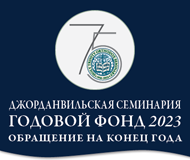News

September 14/27 – The Elevation of the Precious and Life-giving Cross
26 September 2010
“From the first days of the preaching of the apostles, already persecution of the Church of Christ began… The very places of the crucifixion, burial and resurrection of the Lord were covered with a multitude of stones and garbage in order only to take away from Christians the access to them and the ability to recognize them” (G. Lavrentiev. Twelve great feasts of the Orthodox Church, St. Petersburg, 1862). Yet, these holy places, keeping in memory the voluntary passion of the Saviour of the world, continued to draw the faithful.
In the beginning of the second century A.D. the roman emperor Hadrian completely rebuilt the Holy City and took away its ancient name; from then on Jerusalem was called Aelia Capitolina. Among other things, a decision was made to fill the hollow between Golgotha and the garden of Joseph of Arimathea. Later on, the entire plot of land adjacent to the place of the sufferings of the Lord on the cross was levelled; in order to do that, the top of Golgotha had to be cut and the cave of the Holy Tomb had to be filled. On this levelled place, the emperor erected a temple of Venus and Cupid.
As the result, exactly the opposite of what the enemies of Christ wanted took place: by the providence of God, the building of Hadrian as if marked the holy place, thus, excluding the possibility of loss of the knowledge that was preserved by the early Church.
Therefore, from 135 A.D, (when emperor Hadrian allowed Christians to return to Jerusalem) and until 326 A.D. (when St. Helena, the elderly mother of Equal-to-the-apostles Constantine, arrived in Jerusalem) the topographical history of the Gospel events, preserved in the original community of the faithful, managed – in the expression of the Greek Orthodox Encyclopaedia – “without dark spots”. St. Helena was able to find the Tomb of the Lord and the Trembling Golgotha. “They removed layer after layer, – describes the dig the contemporary of the finding, “the father of Church History” Eusebius Pamphilus. – And suddenly, in the depth of the earth, beyond any expectation, there appeared an empty space, and then – the precious and all-holy sign of the saving Resurrection”. That was the cave of the tomb.
In 351 A.D., St. Cyril of Jerusalem addressed the heir of St. Constantine – emperor Constantius – with a letter, where it is said exactly that “in the days of your father Constantine, may his memory be blessed”, near the Holy Tomb, the Life-giving Cross of the Lord was found. According to ancient tradition, the place, where the Holy Cross was buried, was pointed to – under duress – by someone named Judah, called “prophet’s son”.
But the unconquerable power of the Lord’s Cross reached him as well: seeing with his eyes the wonders from the unearthed instrument of a shameful death, Judah, along with others, his fellow countrymen, believed in the Crucified One “and was baptized, and in the holy baptism he was called Cyriacus; later on he became patriarch of Jerusalem. In the time of the emperor Julian the Apostate, he was tortured for Christ and having received a martyr’s wreath, was numbered among the saints”. (Lives of Saints, Word about the Elevation of the Cross of the Lord).
St. John Chrysostom says that it was possible to distinguish the Cross of Christ from those of the robbers, that were similar, by the table with an inscription made by the order of Pontius Pilate. In the description of the historian Sozomenus, that was included in the Lives of Saints, it is said that the tablet was found lying separately. It was possible to identify the Cross of Jesus only thanks to the miracle of the healing of a gravely ill woman and of the resurrection. “When the Patriarch with the Queen and the people, who were carrying the crosses out of the house of her that was healed, they met a large funeral procession of a certain Jew. Filled with faith, the Patriarch stopped the procession and having come up to the bier, placed all three crosses upon the dead man…; only the Cross of the Vanquisher of death and the Source of life broke the bonds of death and the dead man returned to life!”.
The discovered Tree, as is said in a letter of St. Cyril of Jerusalem, spread throughout the entire universe, for its parts were given to churches. People say that, to this day, requests go to the Jerusalem Patriarchate, to give to this or that local church a piece of the Holy Cross, but it is, of course, impossible to fulfill them: exactly this way, little by little, the portion of the Cross sent by St. Helena to Constantinople, vanished, ceased to be.
In 1799, during the reign of the Emperor Paul Petrovitch, the Ist, once he received the title of the great master of the Malta order, a portion of the Lifebearing Tree, along with other holy objects – the right hand of St. John the Baptist and the Icon of the Mother of God of Philermos – were brought from Malta to Russia, where they were kept in the Gatchina palace, then in the Winter palace, and when a cathedral in honour of Ss. Peter and Paul was erected in Gatchina, they once again returned to that town. The feast of the Philermos icon, in memory of the bringing of the wonderworking image to Russia, was set in 1800 on the 12th of October, Old Style.
After the October revolution of 1917 the holy objects ended up in the vestry of the Archangels’ cathedral of Moscow Kremlin, then in Estonia, Denmark, Germany, and finally, in Serbia. During World War II the relics were preserved in the Montenegro monastery. Almost ten years they were hidden in the monastery of St. Basil of Ostrog, but when in the beginning of the nineteen fifties, communists seized the power in Yugoslavia, they were taken and placed in a museum. Only in the summer of 1993, on the day of the feast of the nativity of St. John the Forerunner, the right hand of St. John the Baptist and a piece of the Life-giving Cross of the Lord were returned to the Church and given to the Cetinjski monastery of the Nativity of the Most Holy Theotokos.
When the Holy Objects left Russia, a copy of the icon of the Mother of God and a painting of the right hand of St. John the Forerunner were made in Gatchina. In the nineteen nineties, Gatchina Ss. Peter and Paul cathedral received as a gift a piece of the Tree of the Life-giving Cross of the Lord.






